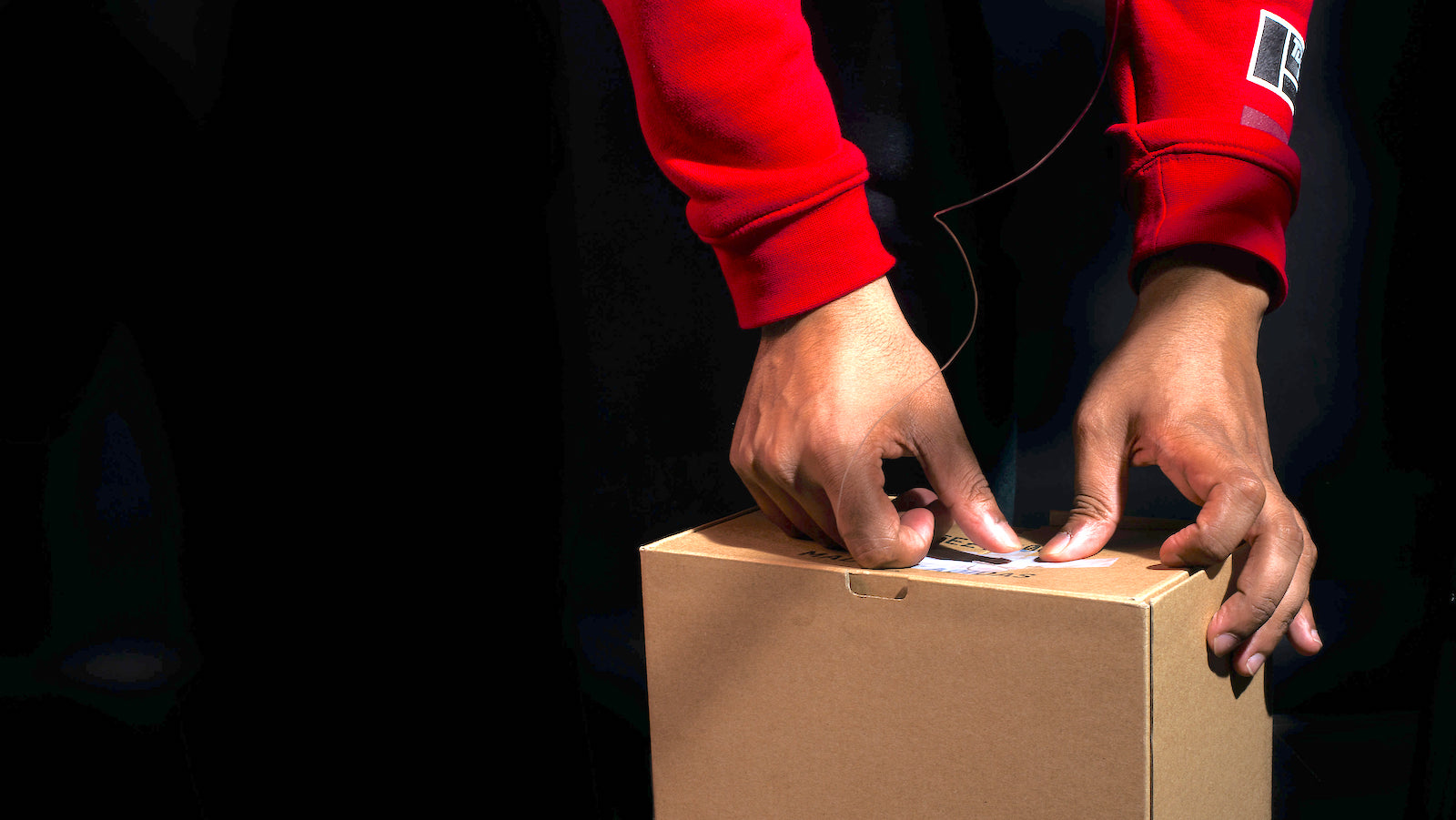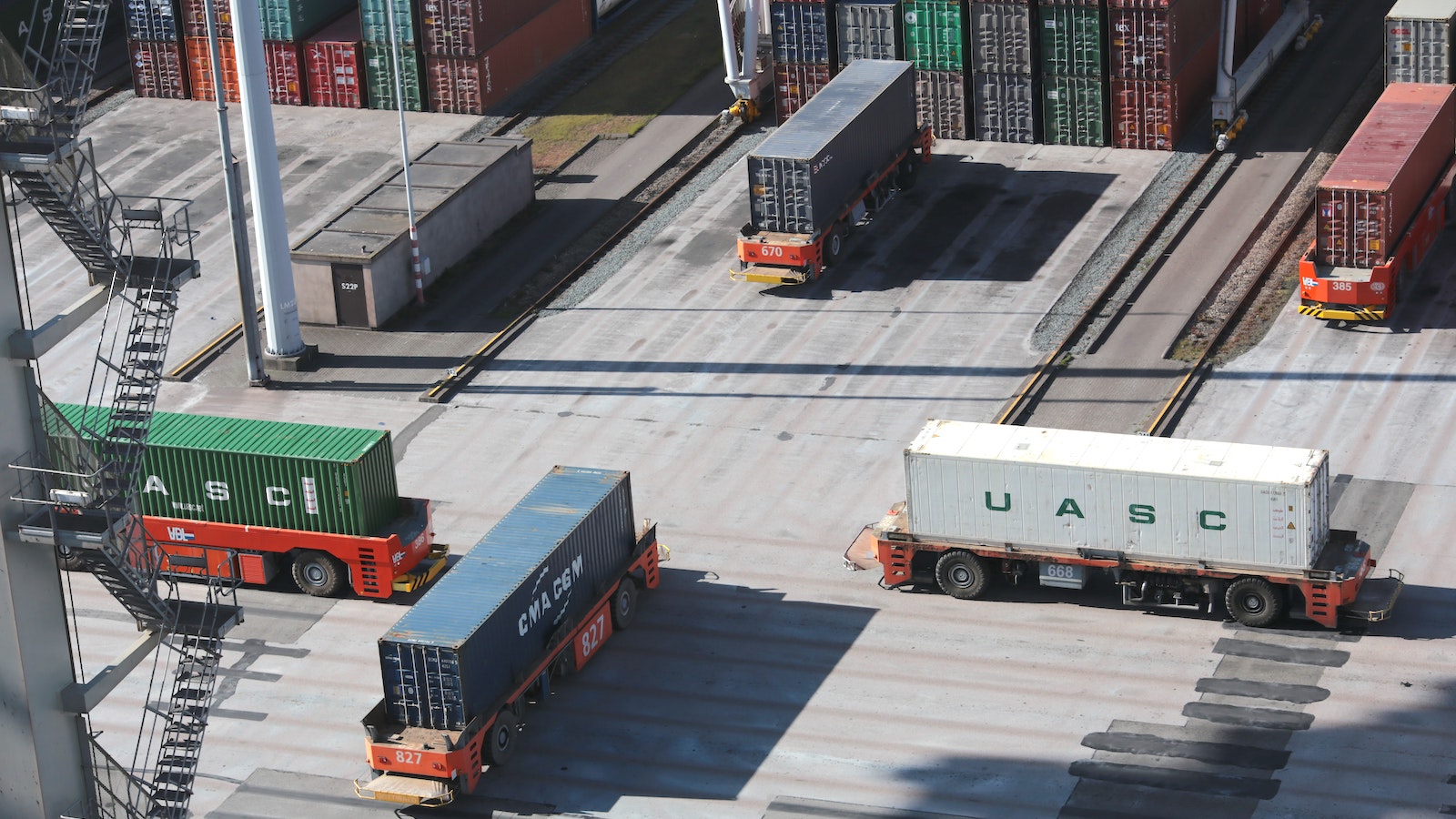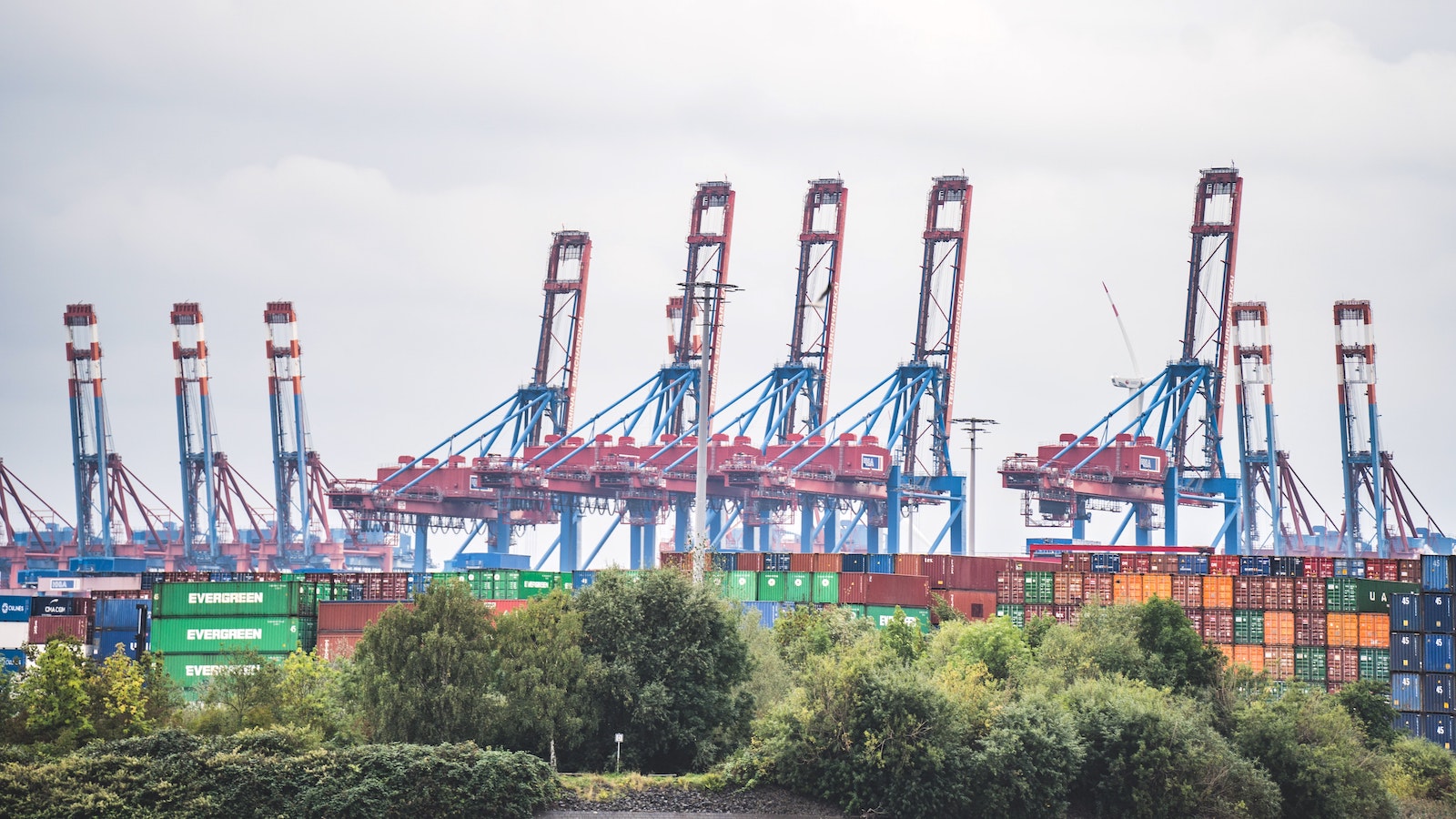Table of Contents
** Minutes
What does ship from store mean?
How do retailers ship from stores?
The good part of shipping from stores
The bad part of shipping from stores
The ugly side of the ship from store method
How retailers can become ecommerce companies without shipping from stores
Does your business have physical storefronts? Is your online order volume growing?
If you said “yes” to both, then your business could be well-suited to a ship from store strategy.
Shipping out ecommerce orders from physical stores instead of distribution centres can be a great way to improve shipping speed while driving down shipping cost.
However, it won’t work for every business — smaller operations in particular may not have the locations, resources, or employees to pull it off.
In this article, we’ll cover what ship from store is, how it works, the pros and cons of ship from store as a fulfilment strategy, and how ShipBob provides an alternative to shipping from stores.
What does ship from store mean?
Ship from store is a fulfilment strategy where orders placed on an ecommerce platform are fulfiled at brick and mortar locations, rather than at a warehouse.
In this model, the physical storefront’s inventory is used to fulfil online orders (rather than the inventory stored at a warehouse), and store employees are the ones picking and packing online orders.
Ship from store is distinct from in-store pickup and curbside pickup, as it does not require the customer to travel to a store, but rather ships the order to the end customer from the retail location.
How do retailers ship from stores?
The process of shipping from store is as follows:
- A customer goes to a retailer’s ecommerce website, and orders an item.
- The retailer forwards that order to its retail location closest to the order’s destination (presuming the time is in stock at that location).
- In the back of that store, an employee picks the item from the store’s existing inventory, packs it in a box, and ships it to the end customer.
Essentially, this model turns retail locations into mini distribution centres. This expands your business’s geographic presence, which in turn enables you to reduce transit times and shipping costs.
However, implementing a ship from store strategy is not easy. Here are a few considerations to think through before committing to ship from store.
Determine order volume
Order volumes fluctuate, but knowing your average order volume can help you decide if your business can manage to ship from store. If your business ships very few online orders to customers daily, then leveraging local stores as distribution centres shouldn’t overwhelm the store’s capacity.
However, keep in mind that as your business scales and online sales grow, fulfiling all online orders and managing in-store customers and walk-ins will get complicated quickly.
Determine type of packaging needed
If you are sending an order out from a store, you need to be mindful of the packaging for each order. The packaging that an item is sold in in the store is not necessarily the best choice for shipping.
Some items will require a specific type of poly mailer, SIOC packaging, or even eco-friendly packaging when shipped to a customer’s doorstep. Having specific criteria for online vs. in-store packaging is critical, but remember that the two could easily get mixed up.
Different types of packaging will also affect the weight and dimensions of your packages. Be sure to keep track of the weight and dimensions of orders, as your shipping costs will vary depending on these metrics. Some couriers price shipments based on the actual weight and others on the DIM weight.
Where are you shipping?
Shipping costs are also determined by which shipping zones to which and from which your orders are dispatched. International fulfilment in particular tends to be more expensive, owing to the larger distances that the package will need to traverse.
Negotiating bulk shipping discounts also becomes more difficult when orders must ship from many locations, rather than a singular warehouse.
“I’ve also been fortunate to ship orders to customers from around the world. The process of shipping internationally to optimise costs has been easy.
There’s no difference on my website for international shipping except adding tariff codes on products. Otherwise ShipBob handles everything for me.
Best of all, the price that ShipBob charges to ship internationally is less than it costs for me to print a USPS label myself.”
Anastasia Allison, founder of Kula Cloth
The good part of shipping from stores
For large ecommerce businesses that have a solid offline presence, it makes sense to do away with renting extra warehousing space and ship directly from a local store. Here are the main advantages to the ship from store model.
Improves in-store inventory turnover
When online orders are fulfiled using inventory allotted to brick-and-mortar stores, those locations naturally see higher inventory turnover.
This can be positive for a business (especially if physical locations experience lower order volumes than other channels), as it keeps inventory moving and helps you avoid deadstock.
Reduces shipping time & cost
By keeping inventory close to the online shopper, you facilitate faster transit and delivery times for customer orders. It also cuts down the number of shipping zones your package is required to cross, which reduces average shipping cost.
Distributes risk in case of a disaster
If the majority of inventory is stored in a single warehouse location, a disaster (such as a hurricane, tornado, or flood) could destroy nearly your entire stock and make it impossible to meet demand.
Splitting your inventory between multiple distribution centres — in this case, multiple retail locations — helps protect you from losing all your inventory.
The bad part of shipping from stores
Shipping from store is not the best choice for a lot of retailers — especially smaller ones. Here are some of the biggest downsides to the ship from store method.
Higher operating costs
Ship from store involves many hidden costs.
First, storing inventory and fulfiling and shipping orders at physical store locations is very labour-intensive, so you will need to hire more store associates or train the existing workforce to manage the online fulfilment process. This increases labour cost, and requires additional time and effort.
You will also need a large network of retail locations in order for shipping from store to truly cut down shipping distance, which requires a significant capital investment. Additional safety stock may be needed to prevent stockouts as well, which increases procurement and carrying costs.
Disrupts in-store processes
Fulfiling online orders at the same location where you serve in-person customers can cause disruptions and inefficiencies. In-store customers may not get the attention they need, or online order accuracy may suffer as employees attempt to multitask.
Increased difficulty managing inventory
When you ship from store, tracking and maintaining inventory levels gets exponentially more complicated.
Because online orders and in-store purchases draw from the same inventory pools, you are far more likely to stock out or accidentally sell inventory that you have already run out of, leading to backorders and disappointed customers.
Unless you have the resources to invest in an omnichannel order management system and inventory management system (or IMS), you’ll have to coordinate inventory levels across channels manually, which gets overwhelming quickly.
“ShipBob’s ability to service both D2C and B2B has enabled us to build more consistent procedures and practices across our different sales channels.
Being an omnichannel brand is critical for us, so we can reach more pet lovers from more places. We’re glad that ShipBob helps us keep up with demand from all the places we reach our customers.”
– Stephanie Lee, COO at PetLab Co.
The ugly side of the ship from store method
Although ship from store initially sounds cost-effective, the unfortunate reality is that for businesses with high order volumes, ship from store is a waste of resources and time.
The cost of overhauling your inventory management strategy, hiring extra staff for order fulfilment, training them, and increasing storage space will likely offset any profits you gain from reducing shipping time and shipping costs.
Add in the time and energy it takes to execute a ship from store strategy, and it’s simply more trouble than it is worth.
That time, money, and energy is probably better spent on establishing omnichannel capabilities in your supply chain and improving customer satisfaction and the quality of customer experience within all channels.
Better yet, consider investing that time and energy into a 3PL partnership that can run warehouses and fulfil DTC and B2B orders for you quickly and with less hassle.
How retailers can become ecommerce companies without shipping from stores
A combination of physical stores and online channels is ideal for capturing demand, as approximately 73% of shoppers visit both engage in both offline and online shopping.
In fact, over the next year, 54% of consumers say they’re likely to look at a product online and buy in-store, and 53% are likely to look at a product in-store and buy online.
However, selling multichannel doesn’t mean you have to ship from store. You can sell through B2B and retail distribution, in which larger retailers purchase your products in bulk and resell them to consumers, taking care of DTC order shipping for you).
Alternatively, you can partner with a fulfilment company that has access to its own warehousing facilities that you can store inventory in, fulfil orders in, and ship out of.
“While we initially used ShipBob exclusively for our retail fulfilment, we quickly outsourced DTC fulfilment to them as well once we experienced how easy and effective it was.
ShipBob’s omnifulfilment solution could handle every sort of order we had, including retail, DTC, and B2B, and had no qualms whatsoever about facilitating our FBA prep orders for Amazon.
Multichannel fulfilment with ShipBob is affordable, too, as not having to do any shipping ourselves enables us to keep low overhead, and ShipBob’s transparent pricing across channels provides even more cost-savings.”
Nathan Garrison, Co-Founder and CEO of Sharkbanz
How a 3PL like ShipBob can handle your fulfilment
By outsourcing to a logistics platform like ShipBob, you get the benefits of shipping from store without the costs, headache, and complexity.
ShipBob has its own network of dozens of fulfilment centres. Our customers get access to space in these facilities, and can use these locations for storage and fulfilment rather than their own storefronts.
ShipBob also helps you distribute your inventory strategically near order destination hubs, enabling you to offer low-cost two day delivery (via ground shipping) to the continental US and achieve the same cost-savings as you would with ship from store.
And while a ship from store model requires you to invest in your own IMS, ShipBob’s dashboard provides top-notch omnichannel inventory management capabilities at no extra cost to you.
Our system offers real-time inventory tracking across all your DTC and B2B channels, so that you can see exactly how your inventory is moving as ShipBob picks, packs, and ships orders for you — even for retail dropshipping and distribution.
Ship from store FAQs
Here are answers to the top questions about shipping from stores.
What companies ship from stores?
Large retailers with a very strong physical store network (such as Target, Walmart, Best Buy, or Kohl’s) tend to use the ship from store fulfilment method. If you already have store spaces in prime locations close to the customer, it is possible to use them as inventory sources for orders.
Is shipping from the store cheaper?
No, shipping from stores is considered one of the more expensive fulfilment options. This is primarily owing to the additional investment that needs to go into buying and storing safety stock and increased labour and training costs.
Does ShipBob fulfil ship from store orders?
ShipBob can fulfil DTC and B2B ecommerce orders, ship online orders directly to end customers, and ship bulk orders to retail stores.



